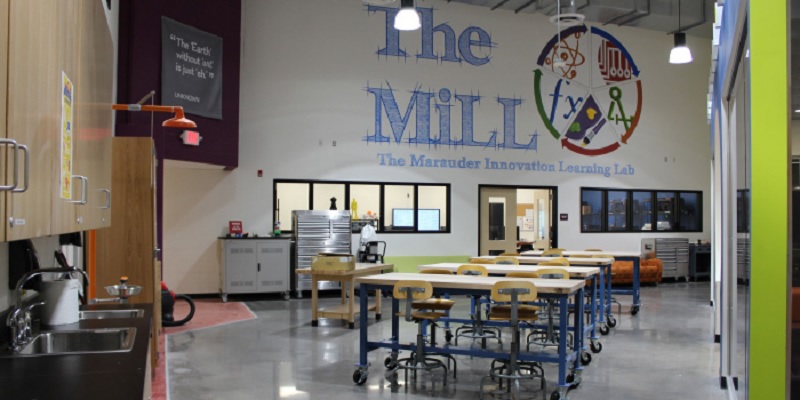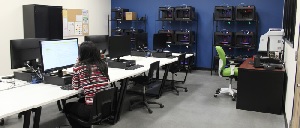
A New Jersey high school in September transformed a 20,000-square-foot auditorium known as “the pit” into the Marauder Innovation Learning Lab (MiLL), a $3 million STEAM-focused extension of Mount Olive High School.
The school has always set itself apart as an emerging technology-focused school. In 2013, a local nonprofit donated a MakerBot Replicator 2X, an experimental 3-D printer, and the school later acquired a couple of extra printers.
 “Our goal with the MakerBot Innovation Center is to provide students a learning environment that replicates what industry is like,” said design teacher Megan Boyd in a MakerBot blog post. “We’ve been talking to many leaders at the college and industry level to better understand what skills students will need to succeed. We heard over and over again that in our rapidly evolving economy, skills like problem-solving and collaboration will be much more important for students than purely technical skills.”
“Our goal with the MakerBot Innovation Center is to provide students a learning environment that replicates what industry is like,” said design teacher Megan Boyd in a MakerBot blog post. “We’ve been talking to many leaders at the college and industry level to better understand what skills students will need to succeed. We heard over and over again that in our rapidly evolving economy, skills like problem-solving and collaboration will be much more important for students than purely technical skills.”
Following demand from students and educators, Mount Olive High School decided to upgrade its 3-D printing center in the spring of 2016. With financing from the local board of education, and the Department of Defense, the school worked with MakerBot to install a MakerBot Innovation Center, the first such center in a secondary school worldwide.
The MiLL revamp allowed the school to transform an area that had been previously off-limits to students for more than a decade due to design flaws and safety concerns into a useful, educational area. The space houses a ThinkerSpace, where students can meet and discuss projects, MakerBot Innovation Center, which houses the 3-D printers, and a Workshop area with workbenches and tools where students can take their prototypes to the next level. The goal is to bring together different faculties to help students learn how to approach problems in a holistic manner. The main courses offered in the MiLL are engineering and industrial design.
“While our engineering courses are focused on the more technical aspects of prototyping, such as assembly design, our industrial design classes very much focus on product design, aesthetics, and user experience,” said David Bodmer, a teacher at Mount Olive, in a MakerBot blog post. “Combining the arts with more traditional STEM learning is really where the magic happens.”
With 33 printers, the school can now accommodate an entire class’ printing needs at once.
“With access to 33 MakerBot 3D Printers, we can print entire class loads at once without having to individually load prints onto a flash drive and cue them for printing,” Boyd said.
This increase in printing capabilities speeds up the design and learning process for students. Rather than having to wait in a lengthy queue to print their work, students can print their prototypes quickly. Students can then get feedback the same day, rather than weeks later.
“When you can quickly make changes and evolve your idea, it’s easier to take criticism from others,” said Bodmer. “We consider that part of the core skill set that students need to succeed. Students need to learn to be flexible in their thinking and be receptive to feedback to refine and develop their ideas. We don’t know what these students will end up doing when they enter the job market but these are the type of skills that will benefit them in any career path.”
According to MakerBot, from September to November, students were able to print more than 700 objects.
MakerBot also explained that plans are in the works for a STEAM (science, technology, engineering, arts, and math) Capstone course for the 2017 school year. The school hopes to partner with local companies and nonprofits that will involve groups of students in their existing projects and then evaluate the students’ work.
